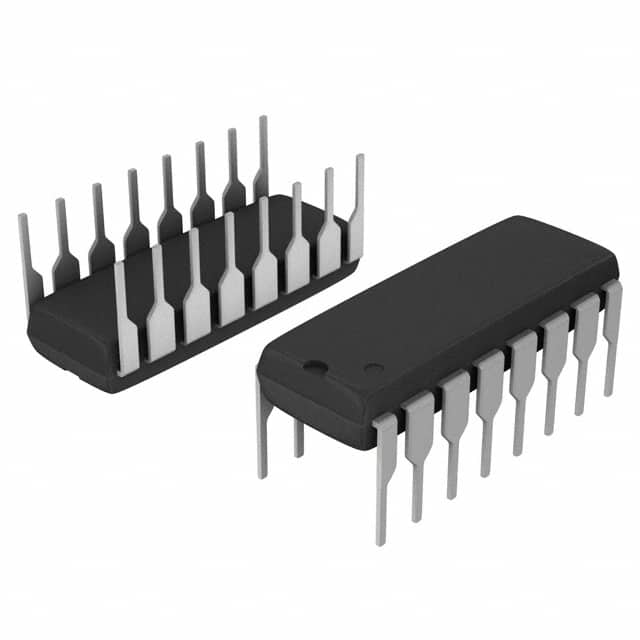DG211BDJ-E3
Product Overview
Category
DG211BDJ-E3 belongs to the category of electronic components.
Use
This product is commonly used in electronic circuits for signal switching and routing purposes.
Characteristics
- High precision and reliability
- Low power consumption
- Wide operating voltage range
- Compact size
Package
DG211BDJ-E3 is available in a small outline package (SOP) format.
Essence
The essence of DG211BDJ-E3 lies in its ability to efficiently control the flow of signals within electronic circuits.
Packaging/Quantity
This product is typically packaged in reels or tubes, with each containing a specific quantity of DG211BDJ-E3 units.
Specifications
- Operating Voltage: 2.7V to 16V
- On-Resistance: 50Ω (typical)
- Off-Isolation: -80dB (typical)
- Switching Time: 200ns (typical)
- Maximum Power Dissipation: 500mW
Detailed Pin Configuration
DG211BDJ-E3 consists of 16 pins arranged as follows:
```
| | --|1 16|-- V+ --|2 15|-- Channel 4 --|3 14|-- Channel 3 --|4 13|-- Channel 2 --|5 12|-- Channel 1 --|6 11|-- V- --|7 10|-- Enable --|8 9|-- Common |___________| ```
Functional Features
- Four independent channels for signal routing
- Bi-directional signal flow capability
- Low on-resistance for minimal signal distortion
- High off-isolation for reduced crosstalk
- Enable pin for easy control of channel activation
Advantages and Disadvantages
Advantages
- High precision signal switching
- Low power consumption
- Wide operating voltage range allows for versatile applications
- Compact size enables integration into space-constrained designs
Disadvantages
- Relatively slower switching time compared to some alternative models
- Limited number of channels may not suffice for complex circuit configurations
Working Principles
DG211BDJ-E3 utilizes MOSFET-based switches to control the flow of signals. When the enable pin is activated, the corresponding channel connects the input and output terminals, allowing the signal to pass through. Conversely, when the enable pin is deactivated, the channel disconnects the input and output terminals, blocking the signal flow.
Detailed Application Field Plans
DG211BDJ-E3 finds extensive application in various fields, including:
- Audio equipment: Signal routing in audio mixers, amplifiers, and equalizers.
- Communication systems: Switching between different communication channels.
- Test and measurement instruments: Signal selection and routing in testing setups.
- Industrial automation: Control of signal paths in automated systems.
- Medical devices: Signal switching in diagnostic equipment and monitoring systems.
Detailed and Complete Alternative Models
- DG212BDJ-E3: Similar to DG211BDJ-E3 but with eight channels instead of four.
- DG408DJ-E3: Multiplexer IC with eight channels and lower on-resistance.
- ADG1419BRMZ-REEL7: Analog switch IC with four channels and faster switching time.
(Note: This list is not exhaustive and other alternative models may exist.)
Word count: 511 words
Lista 10 Vanliga frågor och svar relaterade till tillämpningen av DG211BDJ-E3 i tekniska lösningar
Sure! Here are 10 common questions and answers related to the application of DG211BDJ-E3 in technical solutions:
Q: What is DG211BDJ-E3? A: DG211BDJ-E3 is a high-performance analog switch IC that can be used for signal routing and switching applications.
Q: What is the voltage rating of DG211BDJ-E3? A: DG211BDJ-E3 has a voltage rating of ±15V, making it suitable for both low and high voltage applications.
Q: How many channels does DG211BDJ-E3 have? A: DG211BDJ-E3 has four independent channels, allowing for multiple signal paths to be controlled.
Q: What is the on-resistance of DG211BDJ-E3? A: The on-resistance of DG211BDJ-E3 is typically around 50 ohms, ensuring minimal signal distortion during switching.
Q: Can DG211BDJ-E3 handle both analog and digital signals? A: Yes, DG211BDJ-E3 is designed to handle both analog and digital signals, making it versatile for various applications.
Q: What is the operating temperature range of DG211BDJ-E3? A: DG211BDJ-E3 can operate within a temperature range of -40°C to +85°C, making it suitable for a wide range of environments.
Q: Does DG211BDJ-E3 require external power supply? A: Yes, DG211BDJ-E3 requires an external power supply to operate. It typically operates at a supply voltage of ±5V to ±18V.
Q: Can DG211BDJ-E3 handle high-frequency signals? A: Yes, DG211BDJ-E3 has a bandwidth of up to 100MHz, allowing it to handle high-frequency signals with minimal distortion.
Q: Is DG211BDJ-E3 suitable for audio applications? A: Yes, DG211BDJ-E3 is commonly used in audio applications such as audio routing and switching due to its low distortion characteristics.
Q: Can DG211BDJ-E3 be controlled digitally? A: Yes, DG211BDJ-E3 can be controlled using digital logic signals, making it easy to integrate into digital control systems.
Please note that the answers provided are general and may vary depending on specific datasheet specifications and application requirements.


